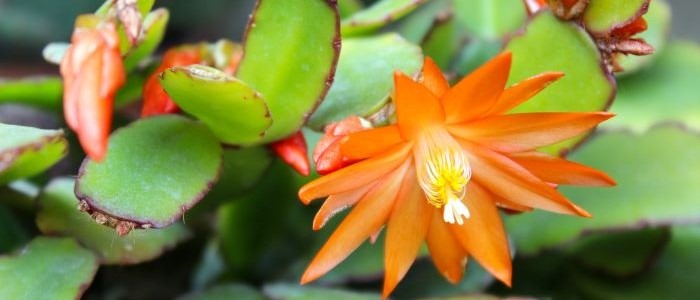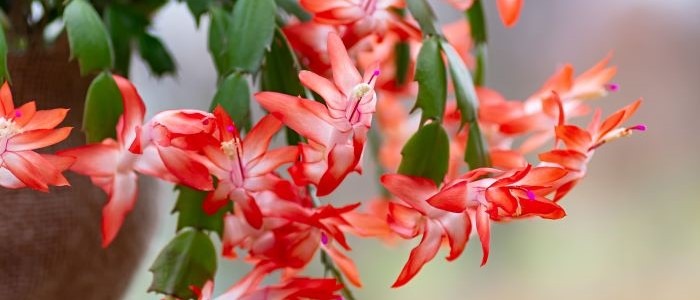Have you been eyeing the Clivia Miniata plant recently for your new home? Well, it’s no surprise considering it is one of the most popular and easy to care houseplants loved by collectors across the globe. The Clivia Minata also known as the” Kaffir Lily, “is a native plant from South Africa, and they look and feel quite exquisite to the eyes.
This plant has textured green leaves, and the flowers range from salmon to brick red, yellow, and red. It is indeed a mesmerizingly beautiful indoor plant that is a relative of the amaryllis plant. This plant takes time to grow and won’t look gorgeous right from the beginning. But this plant will last you really, really long, sometimes even more than a decade. This flowering plant tends to grow and look more beautiful with each passing year. Now that we have talked a lit bit about this houseplant let’s dive deep into knowing more about this plant in case you are thinking of growing it in your home.
Clivia Miniata Frequently Asked Questions
Is Clivia miniata an indoor plant?
The Clivia Minata also known as the Kaffir Lily, are popular relatively easy-to-care-for flowering plants that can be grown indoors. If you want the plant to thrive, make sure you have placed them near a south or east window with indirect light.
Do Clivias grow well in pots?
The Clivia Miniata plant is very low maintenance they grow well in containers so they can be used in patio and balcony gardens. Just make sure your pot is a good size so that the plant will thrive.
How do you propagate Clivia miniata?
The Clivia Miniata plant can be propagated through two methods. You can either try dividing the plant after flowering or simply through seeds. Propagation By Division: This should be done after the flowering period is over, especially around late summer. If propagating by seed sowing the seeds by putting them in individual containers of about 3 inches. Cover the seeds with compost and keep the containers at around 70 degrees F for the seeds to germinate.

Taking Care of the Clivia Miniata Plant
Clivia Miniata is considered an excellent investment. And that’s not all. They tend to have evergreen foliage, and because of the bright, beautiful colors, they are the perfect option if you are thinking of adding some color to your home. So if you are thinking of planting them remember that this plant needs potting soil that is rich and preferably mixed with some pit. If you are thinking of repotting them, make sure the roots have fully outgrown the container.
For healthy growth, you need to feed the plant on a regular basis. Feeding the plant during the growth period and watering regularly makes sure the plant thrives well. Also, one more thing to keep in mind is the temperature of the bulbs during the growth phase should be around 60-80 degrees Fahrenheit. During winters, make sure the temperature doesn’t fall below 50-55 degrees Fahrenheit.
The Clivia Miniata generally grows from early spring to fall, and this is when it tends to need proper watering, light, fertilization, and warmth. Temperature indoors during the daytime should be around 70-75 degrees Fahrenheit, and the temperature shouldn’t fall below 60-65 degrees Fahrenheit at night. If you want the plant to thrive, make sure you have placed them near a south or east window.
Growing Clivia In Pots
The Clivia Miniata plant also known as the Kaffir Lily thrives in a sizeable pot with a minimum diameter of at least 20cm. For best results you should repot in spring, using a high-quality, peat-free all-purpose potting mix with added loam. When repotting make sure the rootstock, or rhizome, is above the soil level.
Clivia Miniata Plant Propagation
The Clivia Miniata plant can be propagated through two methods. You can either try dividing the plant after flowering or simply through seeds. Let’s understand the two methods a little more thoroughly.
Propagation By Division: This should be done after the flowering period is over, especially around late summer. Just follow the below-mentioned process:
- Divide the plant by simply pulling it apart and then remove any damaged roots
- Make sure you have washed the compost away
- Remember to not cut the plant as it might end up damaging the plant
- While potting the plant, make sure you leave plenty of space for the roots to grow
- Make sure that you water the new divisions properly
- Lastly, remember to keep the plant temperature at 60 degrees F
Propagation From Seeds: If you are wondering how to propagate seeds, you first need to get some seeds. In case you already have a plant, you can just harvest them. Follow these steps to propagate the Clivia Miniata from seeds:
- Harvesting the seeds is best when the fruits have turned red
- Next comes sowing the seeds and putting them in individual containers of about 3 inches
- Then comes covering the seeds with compost and keeping the containers at around 70 degrees F for the seeds to germinate.
- After about 8 weeks, leaves will start appearing. This is when you have to reduce the temperature to 60 degrees F and make sure the plants keep growing
- It will take anywhere between 3 to 4 years for the seeds to propagate and for the beautiful flowers to bloom
Pruning the Clivia Miniata Plants
How do you intend to prune your Clivia Miniata? Are you thinking of removing the faded and dead flowering parts, or do you intend to divide the plant for propagation? Well, whatever your reason is, we are going to talk about everything you need to know about pruning the Clivia Miniata.
- Pruning the Dead Leaves: Have the leaves of your houseplant started turning yellow? And do you think it’s time to start pruning them? Well, don’t because this is not a great idea. Instead, wait for the leaves to become completely yellow and then just break them off slowly. In case you find a leaf to be partially damaged, it is best to remove the entire leaf. Just make sure you clip it off as closely as possible to the stem.
- Pruning the Dead and Faded Flowers: Deadheading is a great way to get rid of dead flowers. Just make sure you cut off the flowers near the stem. Removing the dead flowers is a great way of cleaning up this plant. And that’s not all; it also helps conserve precious energy the plant spends to produce seeds. The plant will now be able to focus its energy on flowering and further growth.
- Trimming the Roots: You don’t need to prune the roots of this plant before it starts flowering. This is because the roots have to absorb nutrients so that the flowers can bloom. In case the plant is really old, it is then that pruning becomes a necessity. Remember, too many roots will only prevent the proper absorption of nutrients, which will end up hindering growth. Just cut the roots with a pair of scissors and then make sure the area doesn’t get infected with bacteria. All you need to do now is implant the plant back into the soil and keep watering it like you usually do.
Well, now you can see for yourself how easy it is to grow and take care of this beautiful flowering plant. The flowers are trumpet-shaped and large, with a splash of various vibrant colors. Complimenting the flowers are the long dark green thick leaves that make the plant look extremely attractive. And what more? It doesn’t even need much pruning or taking care of. Well, these are enough reasons for anyone to get a Clivia Miniata today. So what are you waiting for?
Other House Plants With Orange Flowers













